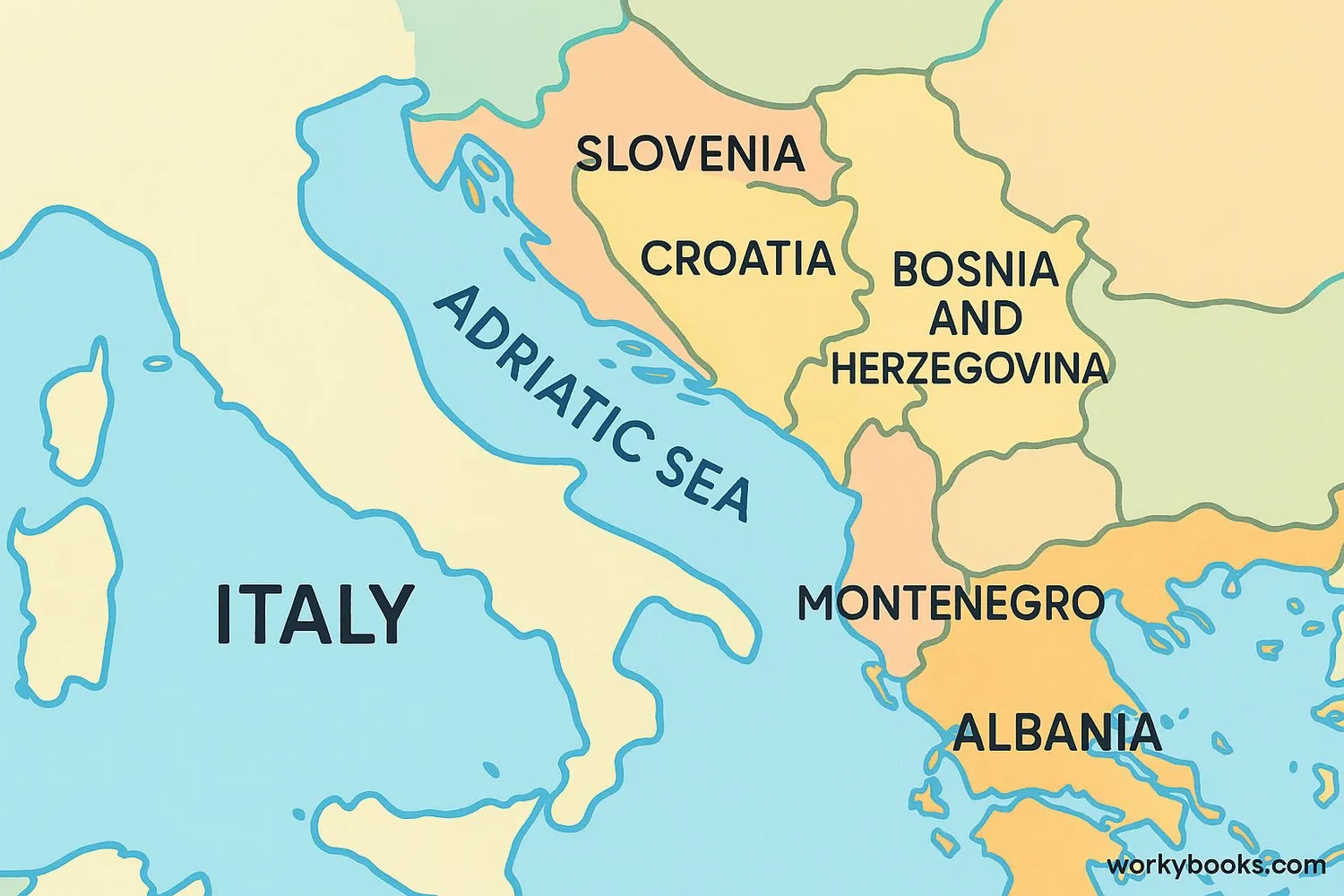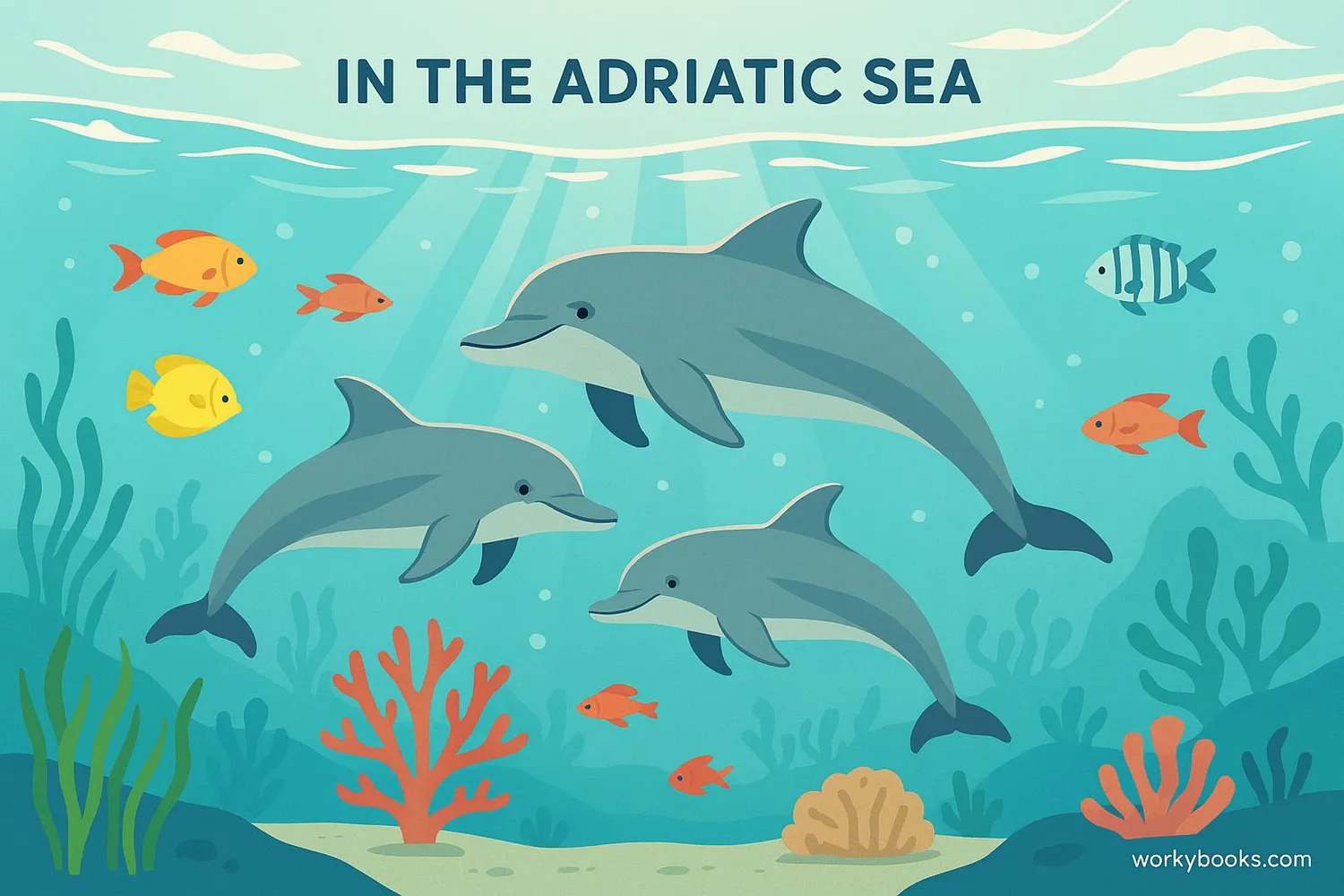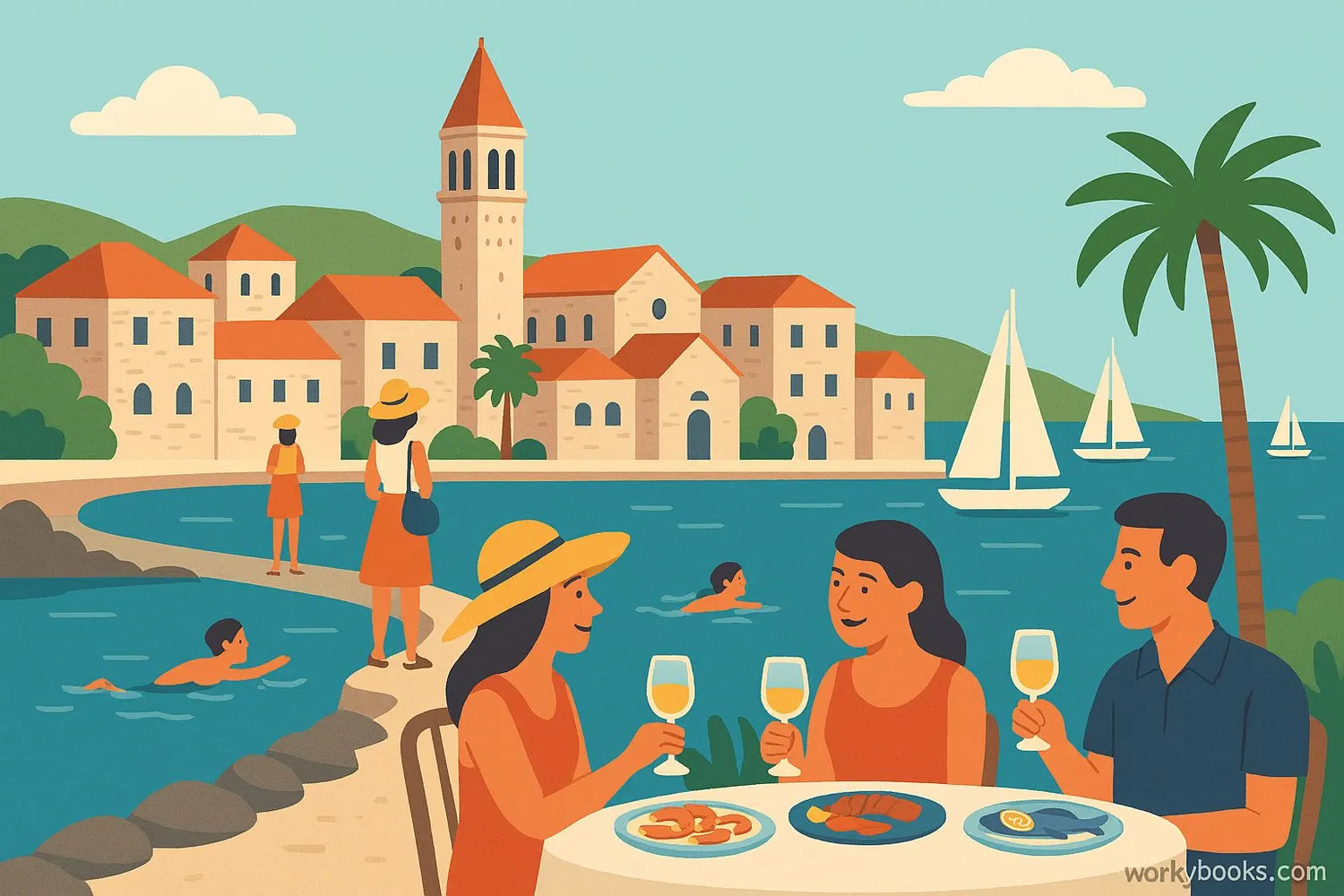The Adriatic Sea - Definition, Examples, Quiz, FAQ, Trivia
Explore the body of water that connects Italy and the Balkan Peninsula
What is the Adriatic Sea?

The Adriatic Sea is a body of water that separates the Italian Peninsula from the Balkan Peninsula. It's the northernmost part of the Mediterranean Sea, stretching about 800 kilometers (500 miles) from the northwest to the southeast.
The Adriatic is known for its beautiful blue waters, rich marine life, and important coastal regions. It connects to the rest of the Mediterranean Sea through the Strait of Otranto. The sea is relatively shallow compared to other parts of the Mediterranean, with an average depth of about 252 meters (827 feet).
Did You Know?
The name "Adriatic" comes from the ancient Etruscan city of Adria, which was an important seaport in Roman times!
Geography & Location

The Adriatic Sea is bordered by several countries:
Italy
The western coast with famous cities like Venice and Bari
Croatia
The eastern coast with over 1,000 islands
Other Countries
Slovenia, Bosnia and Herzegovina, Montenegro, and Albania
The sea can be divided into three basins:
1. Northern Adriatic: Shallowest part, with depths less than 100 meters
2. Middle Adriatic: Features the Jabuka Pit (over 270 meters deep)
3. Southern Adriatic: Deepest area reaching 1,233 meters near the Strait of Otranto
Coastline Contrast
The Italian coast is generally straight and sandy, while the Croatian coast is rugged with many islands, bays, and inlets!
Marine Life & Ecosystems

The Adriatic Sea hosts a diverse range of marine life. Its clear waters and varied habitats support:
Fish Species
Over 400 species including sardines, anchovies, sea bass, and tuna
Sea Grass
Posidonia oceanica meadows that form important ecosystems
Marine Mammals
Dolphins, including the bottlenose dolphin, and occasionally whales
The Adriatic also faces environmental challenges:
• Pollution from coastal cities and rivers
• Overfishing of some species
• Impacts from tourism and coastal development
Conservation efforts are underway to protect the sea's delicate ecosystems, including the establishment of marine protected areas.
Human Activities & Tourism

The Adriatic Sea has been important to humans for thousands of years:
Shipping
Major ports like Venice, Trieste, and Rijeka handle cargo ships
Fishing
Traditional and commercial fishing of anchovies, sardines, and shellfish
Tourism
Millions visit coastal areas for beaches, history, and culture
Tourism is particularly important to the Adriatic region:
• Croatia's Dalmatian Coast attracts visitors to historic cities like Dubrovnik
• Italy's Adriatic coast features popular beach resorts like Rimini
• Sailing is extremely popular, with thousands of islands to explore
The Adriatic coastline features many historic cities that showcase centuries of cultural exchange between Italy and the Balkan countries.
Adriatic Sea Quiz
Test your knowledge about the Adriatic Sea with this quiz!
Frequently Asked Questions
Here are answers to common questions about the Adriatic Sea:
Fun Adriatic Sea Trivia
Discover some amazing facts about the Adriatic Sea!
Island Wonderland
The Croatian coast of the Adriatic has 1,246 islands, islets, and reefs - but only 48 are inhabited! This makes it one of the most indented coastlines in the world.
Venice's Unique Position
The famous city of Venice is built on 118 small islands in the Venetian Lagoon, which opens to the Adriatic Sea. The city's canals and architecture make it one of the Adriatic's most famous destinations.
Depth Variations
The Adriatic Sea has dramatic depth differences. The northern Adriatic averages just 40 meters deep, while the southern Adriatic reaches depths of over 1,200 meters - deeper than three Empire State Buildings stacked!
Historical Crossroads
The Adriatic has been a cultural crossroads for centuries. Venetian, Roman, Greek, and Ottoman influences can still be seen in the architecture, food, and traditions of coastal towns on both sides of the sea.


